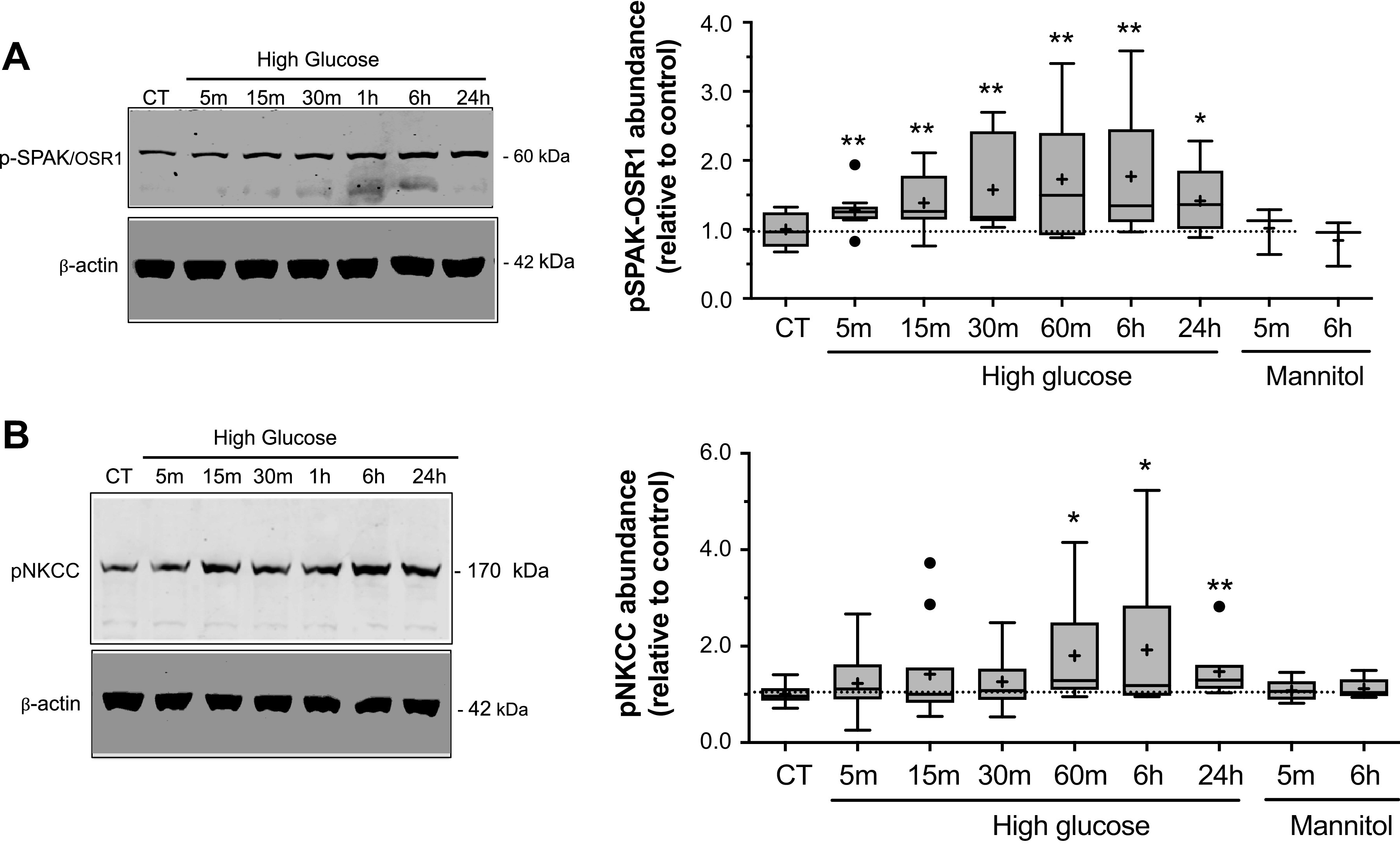Figure 5.

High glucose exposure increases phosphorylation of NKCC and SPAK/OSR1. Bovine CMEC lysates were prepared following high glucose medium exposures and analyzed for abundance of phosphorylated SPAK/OSR1 (p-SPAK/OSR1) using quantitative Western blot and an antibody that specifically recognizes phosphorylated residues in SPAK/OSR1 (SPAK Ser 373 and OSR1 Thr 233). A: Left panel: representative Western blot of p-SPAK/OSR1 abundance in CMEC exposed for 5, 15, or 30 min or 1, 6, or 24 h to high glucose medium (HG, 30 mM D-Glucose, 298 mOsm), or to 24 h of normoglycemic control medium (5 mM D-Glucose). Right panel: Quantitated abundance of p-SPAK/OSR1 following exposures to high glucose for 5, 15 or 30 min or 1, 6 or 24 h or to mannitol osmotic control (5 mM D-Glucose with 25 mM mannitol medium) for 5 min or 6 h. Data are expressed relative to NG control and are presented as Tukey box and whisker plots. N values are 10 for 5, 15, and 30 min HG exposures, 8, 8, and 5 for 1, 6, and 24 h HG exposures, and 3 for 5 min and 6 h mannitol control exposures. B: Left panel: Representative Western blot of phosphorylated NKCC (p-NKCC) abundances in CMEC following exposure to the same conditions as in A. Right panel: Quantitated abundance of CMEC p-NKCC following exposure to the same conditions as in A. Data are expressed relative to NG control and are presented as Tukey box and whisker plots. N values 10, 11, and 10 for 5, 15, and 30 min HG exposures, respectively; 7, 10 and 7 for 1, 6, and 24 h HG exposures, respectively; and 5 for 5 min and 6 h mannitol control exposures. *Significantly different than NG control vehicle by Kruskal-Wallis test, *P < 0.05, **P < 0.01 by Kruskal-Wallis test.
